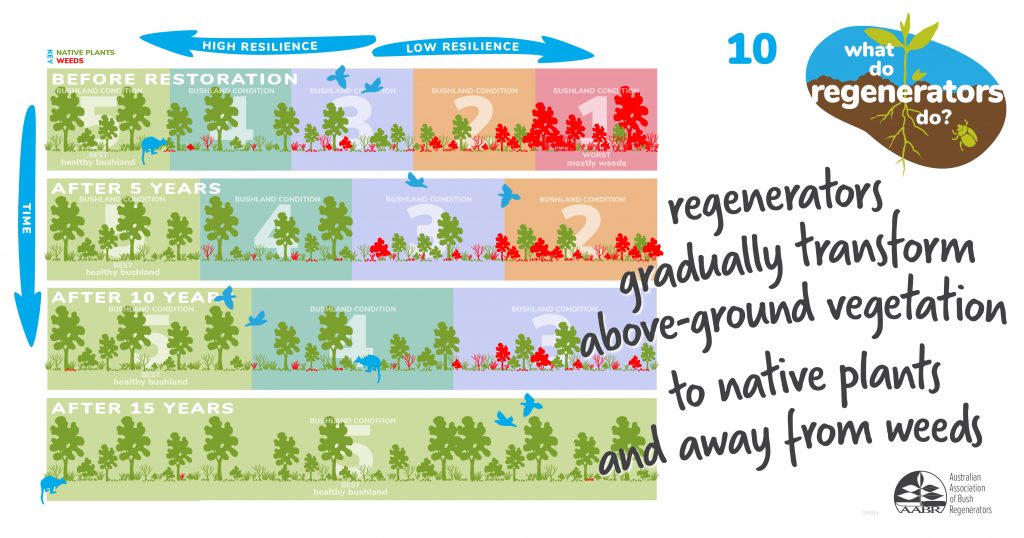Lots of information is available about planting trees – but less about repairing bush.
Here are some hints to start you working out things for yourself.
The best way to rehabilitate bushland is to use nature’s own recovery capacities
Don’t rush in and plant. This is often our first instinct because we know that is something that we can do well. But this may not really help because we might have the wrong species or the plantings might blocking nature’s own capacity to recover.
Who’s the boss around here?
It is important to realise that no amount of well-intentioned work will make the bush recover if it is the wrong kind of help. We are not the boss. The boss is the vegetation itself – whose potential and limits are set by its own biological recovery capacity.
All plants have some sort of biological recovery capacity.
This capacity has developed over millenia of having to recover from natural disturbances – and it is important to realise that it is often hidden under the ground. This natural resilience means that (if not already too damaged) the bush usually has at least some capacity to recover from human damage too, given the right conditions or the right kinds of help.
So the key is to look at what might trigger your bush’s resilience before rushing in with an unsuitable treatment. It is this resilience that you are working with in ecological restoration. Working with it is important, with planting more a way of supplementing what is missing.
Learn to read the signs of hidden resilience.
The mechanisms of resilience might be different for different vegetation types because of the different natural disturbances typically experienced by that vegetation type during its evolution. (See Sheet 3). But they usually involve either resprouting or recovering from stored seed.
For instance, in a woodland, many species (especially shrubs and some grasses store seed in the soil to protect them from fires. Others (especially trees) store seed in their canopies, protected by woody fruits and /or resprout from well-protected, often even buried, buds.
Try a few things in a small section of the site first
Spell the site from grazing or slashing for a start and see what happens. Remove weeds that are suppressing remnant plants. Light tillage or burning of small or low debris piles on the site can also trigger regeneration from soil seed banks. Be prepared for disappointments – or for a few pleasant surprises. Most importantly, be ready to control the weed as this will also have very high regeneration capacity. (The key is to prevent it building up a new weed seed bank.)
‘Follow up’ repeatedly to consolidate the recovery of a smaller patch before moving on to the next patch
A handy information sheet on
Condition of Bushland Mapping




Leave A Comment